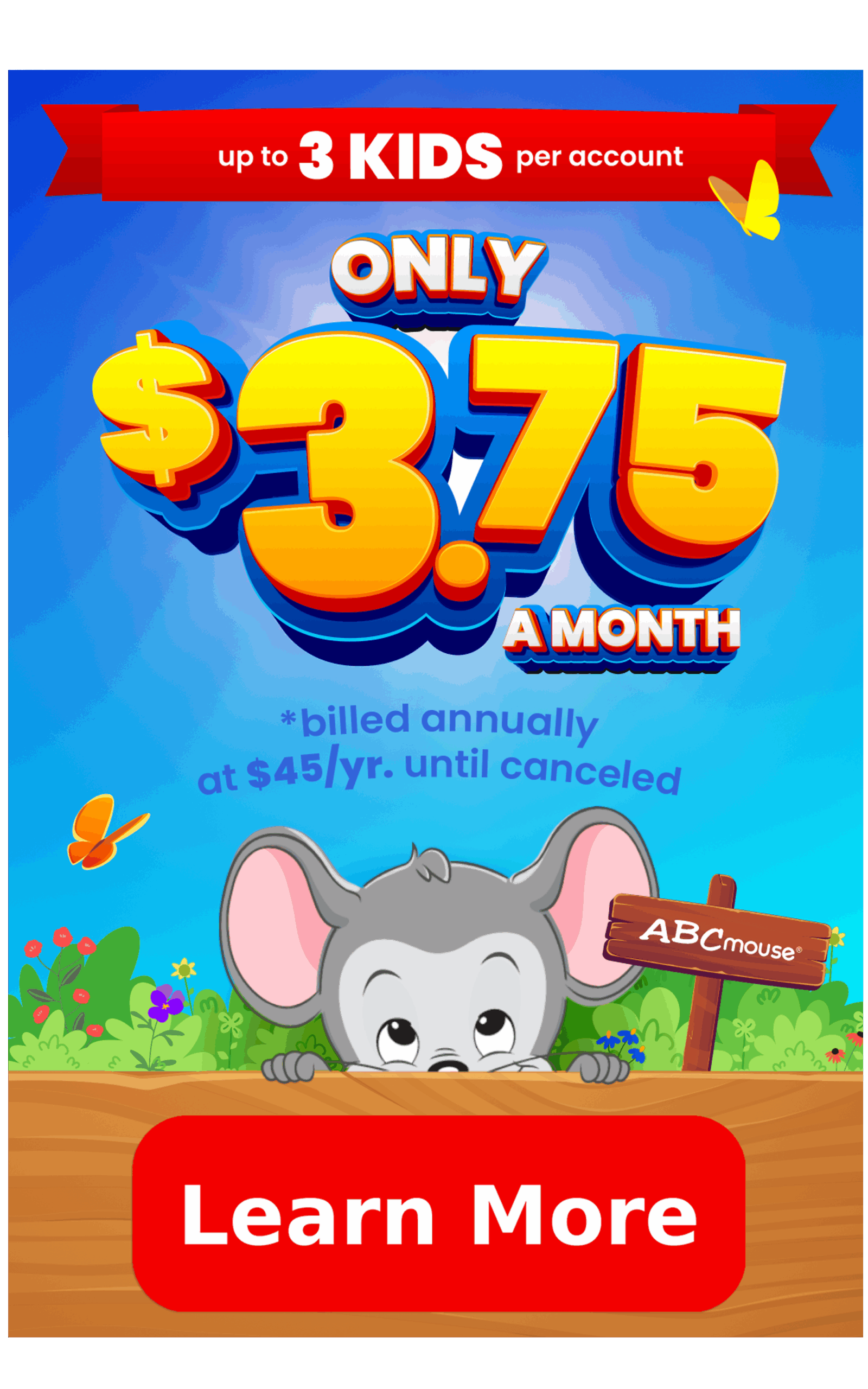
10 Strategies for Helping a Struggling Reader
Seeing your child struggle with reading can feel disheartening at times, but there are numerous strategies and resources that can help.
Why Do Some Readers Struggle?
As a parent, you have a front-row seat to your child’s education, including the development of essential reading skills. Children develop these skills at varying rates, and some children may seem to be struggling readers.
There can be various reasons why some children struggle with reading. Keep in mind that each child is unique, and the underlying causes of reading difficulties can vary from one individual to another.
The ability to read is built on several layers of learning, such as:
- Identifying sounds in words
- Language exposure and comprehension
- Modeling good reading skills, and so much more.
Helping a child learn to read is a complex, years-long process, and it’s important to approach it with patience and to meet your child at their level.
You can learn more about the Science behind reading in this article.
Some children struggle due to a lack of phonemic awareness. Phonemic awareness refers to the ability to identify and manipulate individual sounds in spoken words.
Difficulties in phonemic awareness can hinder a child’s ability to associate sounds with letters, leading to reading struggles.

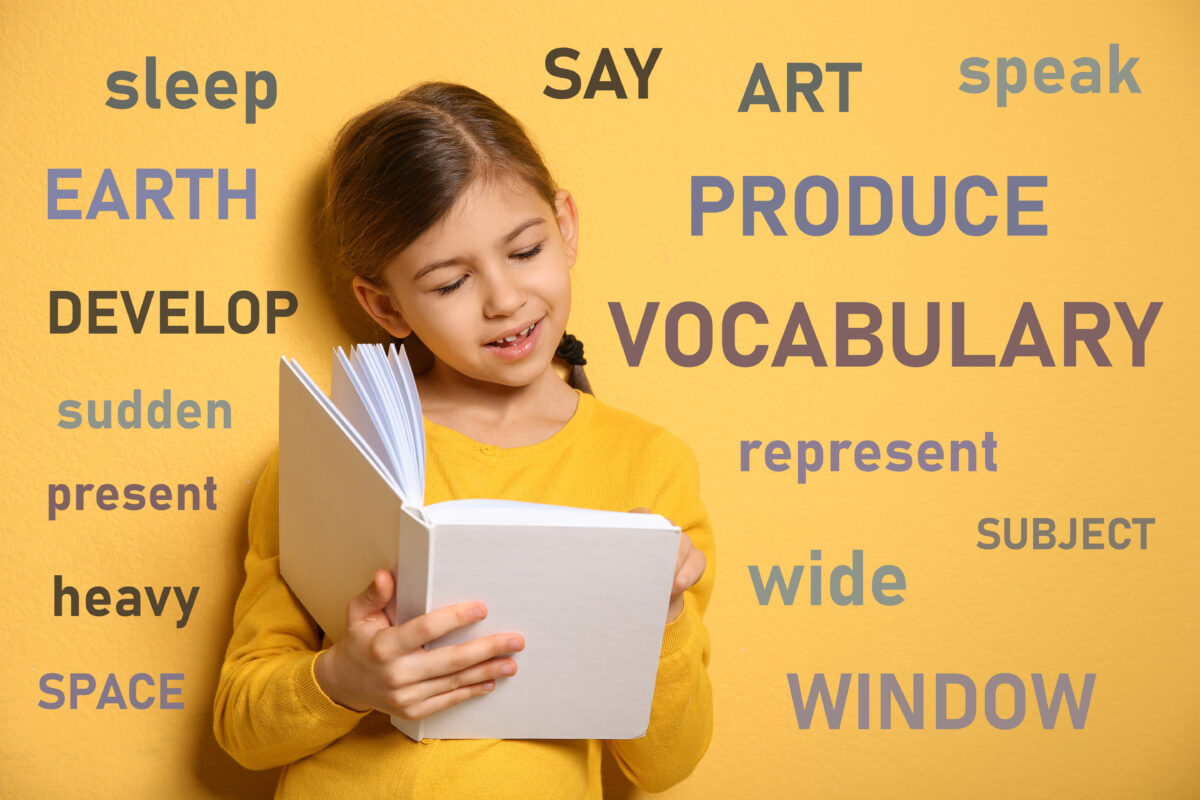
A solid foundation in vocabulary and language skills is also essential for reading comprehension. Children with less exposure to language, vocabulary, and verbal interactions may face challenges in understanding written texts.
Reading success includes a child’s ability to not only connect decoding words and sentences, but to also connect them to words and ideas they have experienced in life. Children who have limited opportunities to experience new words and a wide range of language styles may struggle to develop reading fluency and comprehension.
Learning differences, such as dyslexia, which affects a child’s ability to decode words, recognize letters, or process sounds, can make reading more challenging and may require specific interventions and support.
Children with attention difficulties can also struggle with reading, as successful comprehension requires integration of many smaller processes as well as the use of working memory and executive functions.


Whether formal learning differences have been identified or not, it’s important to provide your child with the right support. A one-size-fits-all approach to learning often doesn’t address the challenges that individual children experience while learning.
When helping a struggling reader, parents may need to adjust their approach to appeal to their child’s unique interests, like reading about topics they prefer, acting out stories to help with comprehension, and trying audiobooks while coloring.
When a child struggles in any subject, it can have an emotional impact. Children who feel stressed, pressured, or have negative experiences associated with reading may feel more reluctant to try it.
Proactively identifying and addressing needs can help a child maintain a positive relationship with reading.

It’s important to note that struggling readers can overcome these challenges with appropriate interventions, support, and patience.
Identifying the specific difficulties a child faces and providing targeted strategies and resources can help them develop their reading skills and build confidence.
How to Recognize a Struggling Reader
Identifying a struggling reader is the first step towards helping them. Here are a few key signs to look for that may indicate your child needs additional support with reading.
Difficulty Decoding Words:
Struggling readers often have trouble sounding out words or applying phonetic rules to decode unfamiliar words. They may rely heavily on guessing or skipping words altogether.
Labored Reading:
If a child consistently shows signs of effort and strain while reading, it may indicate a struggle. They may pause frequently, stumble over words, or exhibit hesitations.
Poor Comprehension:
Difficulty understanding and retaining what they read is a key sign of reading struggles. A child might have a hard time answering questions about the text, summarizing the main ideas, or making connections between different parts of the story.
Lack of Fluency:
Fluency refers to the ability to read with accuracy, speed, and expression. Struggling readers often lack fluency and may read in a choppy or monotone manner, without appropriate intonation or rhythm.
Avoidance of Reading:
Children who struggle with reading may actively avoid reading activities. They may express disinterest or frustration when faced with reading tasks, find excuses to avoid reading aloud, or exhibit resistance towards engaging with books.
Spelling Difficulties:
Reading and spelling skills are closely connected. Struggling readers often have difficulty spelling words correctly and may make consistent spelling errors or rely heavily on phonetic guesses.
Lack of Confidence:
Children who struggle with reading may display low self-confidence and self-esteem related to their reading abilities. They may express frustration, embarrassment, or negative self-talk when confronted with reading tasks.
Discrepancy Between Oral and Written Language:
Some children exhibit a significant gap between their oral language skills (ability to communicate effectively) and their written language skills (struggles with reading and writing). This inconsistency can indicate reading difficulties.
It’s important to note that struggling readers can overcome these challenges with appropriate interventions, support, and patience.
Tip: Make note of the specific things your child struggles with. For example, do they struggle to hear the difference between the sounds of letters ‘k’ and ‘t’? Do they have a hard time remembering events in a story? Keeping track of these challenges can help direct your efforts or come in handy when speaking with teachers or seeking outside help.
Remember that each child is unique, and these signs may vary in severity and combination. If you notice several of these indicators in your child, it may be beneficial to seek further assessment, support, or guidance from your child’s teacher or an educational therapist or reading specialist. Early intervention can greatly contribute to a child’s reading success.
10 Strategies for Helping a Struggling Reader
The first step in recognizing a struggling reader is seeing the signs that your child is having difficulties with reading. The next step is assessing your child’s abilities, such as their current reading level or specific areas of difficulties, to help determine which strategies and interventions will be most effective for their needs.
Check out these three tips on helping a struggling reader from the ABCmouse Instragram page, then read on for even more helpful ways to help your child.
1. Model and Encourage a Love for Reading
Make reading an enjoyable experience by providing a cozy reading nook, filling your home with a variety of books, and reading aloud to your child regularly. Explore different topics and genres that your child enjoys to help them find books they like reading. Even if they’re reading books about a cartoon character, they’re still practicing reading.
Show enthusiasm for reading, and let your child see you engaged in reading for pleasure. By making reading a pleasurable activity, you can inspire your struggling reader to develop a genuine love for books.

2. Provide Targeted, Differentiated Instruction
Design targeted instruction to address your child’s specific areas of difficulty. This may involve focusing on phonics, sight words, comprehension strategies, or fluency development.
Lighten the load for your reader by taking over some of the reading tasks.
Provide additional support or more challenging activities as needed through online resources and educational games. Differentiated instruction allows the child to progress at their own pace and build confidence.
For example, reading aloud to them lets them focus solely on comprehension tasks. Previewing the main ideas of a short text allows them to focus on decoding the words as they read.
3. Phonics and Decoding Skills
Phonics and decoding skills are essential building blocks for all readers. Implement a systematic phonics program that is sequenced thoughtfully: letter-sound correspondences are taught based on their frequency of use in written English (common to rare) and in order from simple to complex.
Utilize word-building activities and interactive games to reinforce letter sounds and phonetic patterns. Gradually introduce sight words, providing ample practice and reinforcement to improve fluency.
4. Multisensory Approaches
Incorporate multisensory techniques to provide various ways for your child to connect with what they’re learning.
For instance, use manipulatives, such as letter tiles or tracing letters in the sand, to help your child visualize and feel the letters and their corresponding sounds.
Combine auditory activities, like rhyming games or recorded readings, with visual aids to reinforce learning. By integrating multiple senses, you can enhance your child’s understanding and retention of reading concepts.

5. Reading Aloud and Shared Reading
Continue reading aloud to your child, even as they grow older. Shared reading experiences allow struggling readers to enjoy age-appropriate texts while building fluency and comprehension skills.
Take turns reading sentences, paragraphs or pages, discuss the story together, and encourage questions and reflections. This interactive approach fosters confidence and encourages your child to actively participate in the reading process.
6. Scaffold Comprehension and Model Reading Strategies
Comprehension is the ultimate goal of reading. Teach and model to your child active reading strategies, such as predicting, visualizing, and summarizing. Encourage discussions about the story or text, asking open-ended questions to deepen understanding. Gradually increase the complexity of the texts as their reading skills improve.
7. Chunk Texts and Use Graphic Organizers
Break down texts into manageable chunks or paragraphs to help your child focus on smaller sections at a time. Use graphic organizers, such as story maps, Venn diagrams, or outlines, to help them visualize the structure and content of the text. These tools assist with organizing information and promoting comprehension.
8. Patience and Encouragement
Supporting a struggling reader requires patience and understanding. Celebrate small victories and progress, no matter how minor. Offer praise and encouragement to build your child’s self-confidence. Keep in mind that everyone progresses at their own pace, and with consistent support, your child will continue to grow as a reader.

9. Building a Language-Rich Environment
Try filling your home with words your child hears and reads. Listening to others speak in conversations, audiobooks, or on appropriate podcasts can help build their language library.
While providing your child with opportunities to hear words, give them the opportunity to read words in books on a variety of topics that range from picture books, short stories, poems, fiction and nonfiction, and more. Incorporate regular trips to the local library for free access to thousands of books and storytime activities, and check your community for Little Free Libraries.
10. Collaborate with Professionals
If your child’s reading struggles persist despite interventions, consider consulting with professionals, such as their teacher or reading specialists or educational therapists. They can provide additional insights, assessments, and specialized support.
According to a study funded by the Institute of Educational Sciences, “One-to-one tutoring is very effective in improving reading performance. Tutoring models that focus on phonics obtain much better outcomes than others. Teachers are more effective than paraprofessionals and volunteers as tutors.”
Remember that progress takes time, and every child learns at their own pace. With consistent effort and targeted strategies, struggling readers can make significant improvements in their reading skills and develop a lifelong love for reading.
Reading Activities to Try with Struggling Readers
When helping a child who is struggling to read, incorporating fun activities can be effective in supporting their reading development. Here are some activities you can try at home.
Phonics Games:
Engage your child in interactive phonics games that focus on letter-sound associations, blending, and decoding skills.
Use flashcards, phonics puzzles, or online resources to make learning phonics enjoyable and engaging.
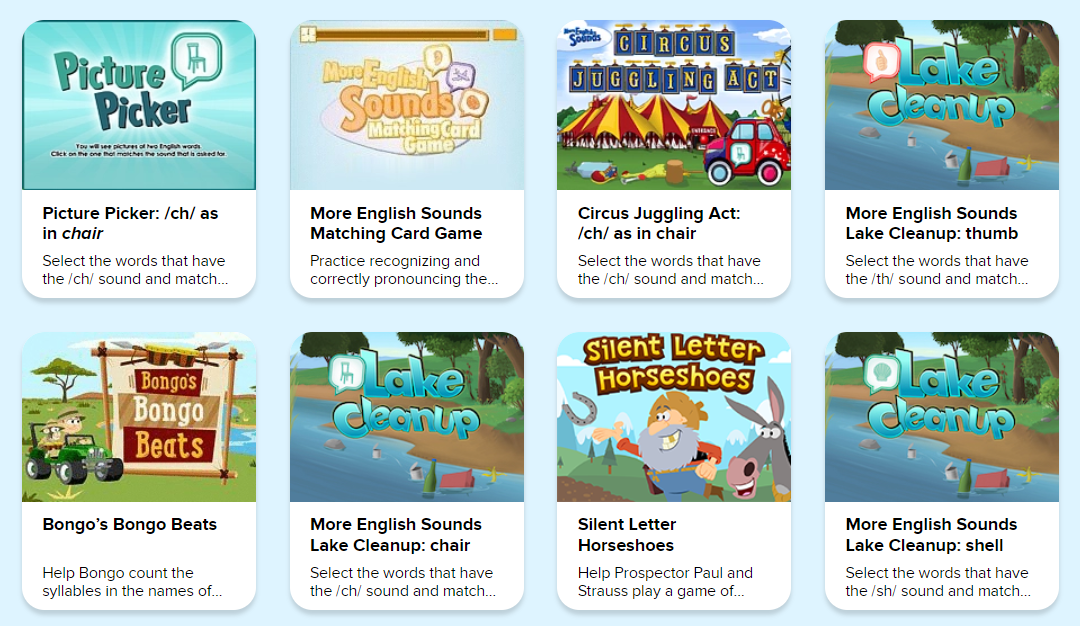
Sight Word Practice:
Teach the sound-spelling pattern in each sight word directly, then use flashcards or digital games for practice.
Make it fun by turning it into a game, such as a sight word scavenger hunt around the house or a memory matching game.

Family and Paired Reading:
Engage the entire family in reading so it’s an activity that’s done together. Let each family member read whatever they’d like, whether it’s a book or magazine, print or digital, informational, or fiction. While doing this, take turns reading with the child by using a strategy called “paired” or “echo” reading.
For young children, start by reading a sentence aloud, and then have the child read the same portion. Provide support and feedback as needed. This can build fluency and confidence as your child learners to “sound like a reader.”

Word-Building Activities:
Use letter tiles, magnetic letters, or other manipulatives to build words. Start with simple three-sound words (consonant sound-vowel sound-consonant sound) words and gradually increase complexity. Encourage your child to blend the sounds and read the words they create.

Journaling:
Encourage your child to maintain a reading journal where they can write about their reading experiences, make reflections, or create their own stories. This helps improve writing skills while fostering a connection with reading.
Reading Aloud:
Read aloud to your child regularly to expose them to fluent reading and model proper expression and intonation. Choose age-appropriate books on topics they’re interested in and discuss the story, characters, and events together to enhance comprehension.
Word Families:
Explore word families (e.g., -at, -an, -ig) and create word family charts or flipbooks. Practice reading and generating words within each family. Try out these free word family worksheets. This helps children recognize common phonetic patterns and improves decoding skills.
Guided Reading and Recording:
Engage in guided reading sessions where your child reads a book at their instructional level with your support. Provide guidance, prompts for decoding strategies, and ask questions to encourage comprehension and critical thinking.
Try recording your child reading so they can hear it back themselves or for you to share their reading with a family member. Listening to their former selves reading may be motivating. Growth is often too slow to notice day-to-day. Listening to the change from last month to this may have a positive impact.
Reading Curriculum:
Utilize a reading curriculum designed to support children in a variety of ways. These resources often provide interactive games, phonics activities, and leveled reading materials to reinforce skills and provide additional practice.
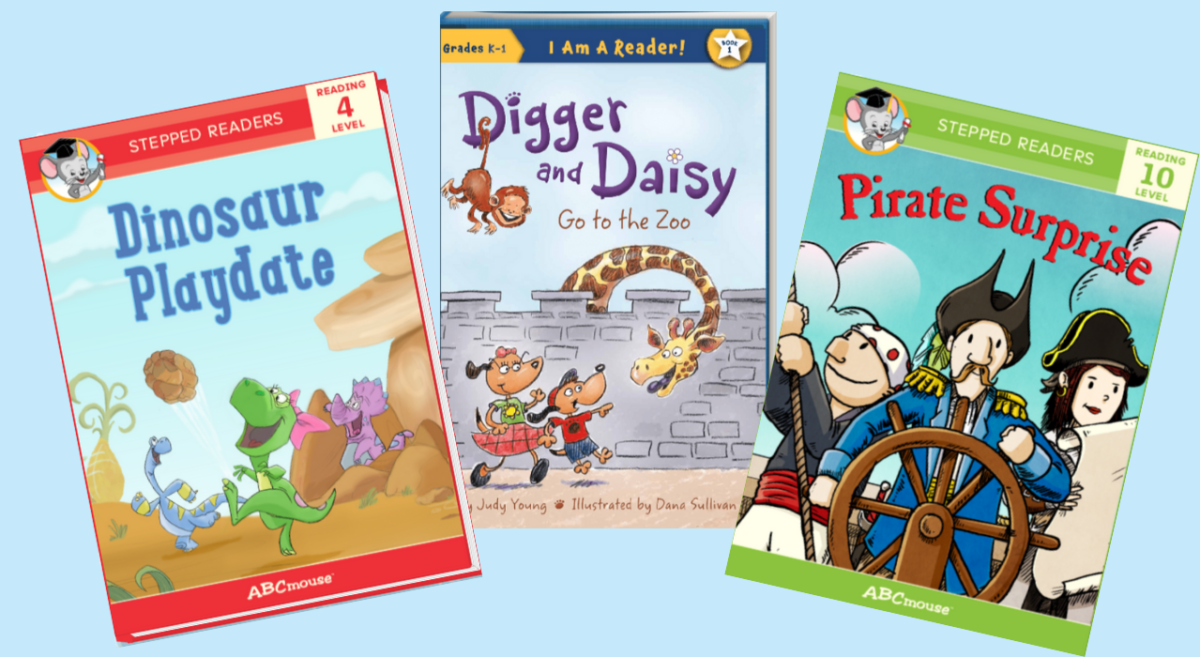
As you guide your child through the challenges of reading and help them celebrate their successes, remember that your child will learn at the pace that’s right for them and you may need to employ a variety of approaches and strategies to help support them.
Weaving fun activities into reading and keeping things upbeat can help add a sense of play and a feeling of success, which is incredibly helpful for your child. Keep in mind that ABCmouse provides an adaptive reading curriculum that can help support your child.

Looking for More Parent Resources?
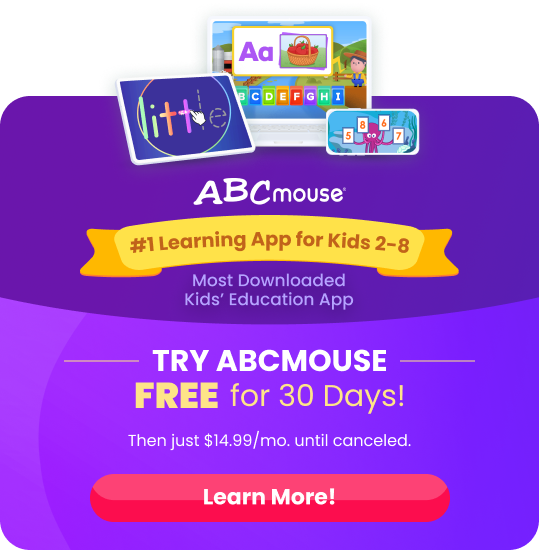
ABCmouse’s expert advice review process:
Our team of ABCmouse Curriculum Experts, made up of talented professionals in early childhood education and development, take a close look at educational content and learning claims. They put in the effort to make sure our information is accurate and current. We have a certified educator or another respected authority review the content, matching their expertise with the topic at hand. They’ll make sure the content is thorough and follows the latest research and educational guidelines. If they think we can make things even better, they’ll chat with our editorial team, and we’ll make those improvements right away. Only after a reviewer gives their thumbs-up does a piece of content get the official stamp of approval in the byline.


